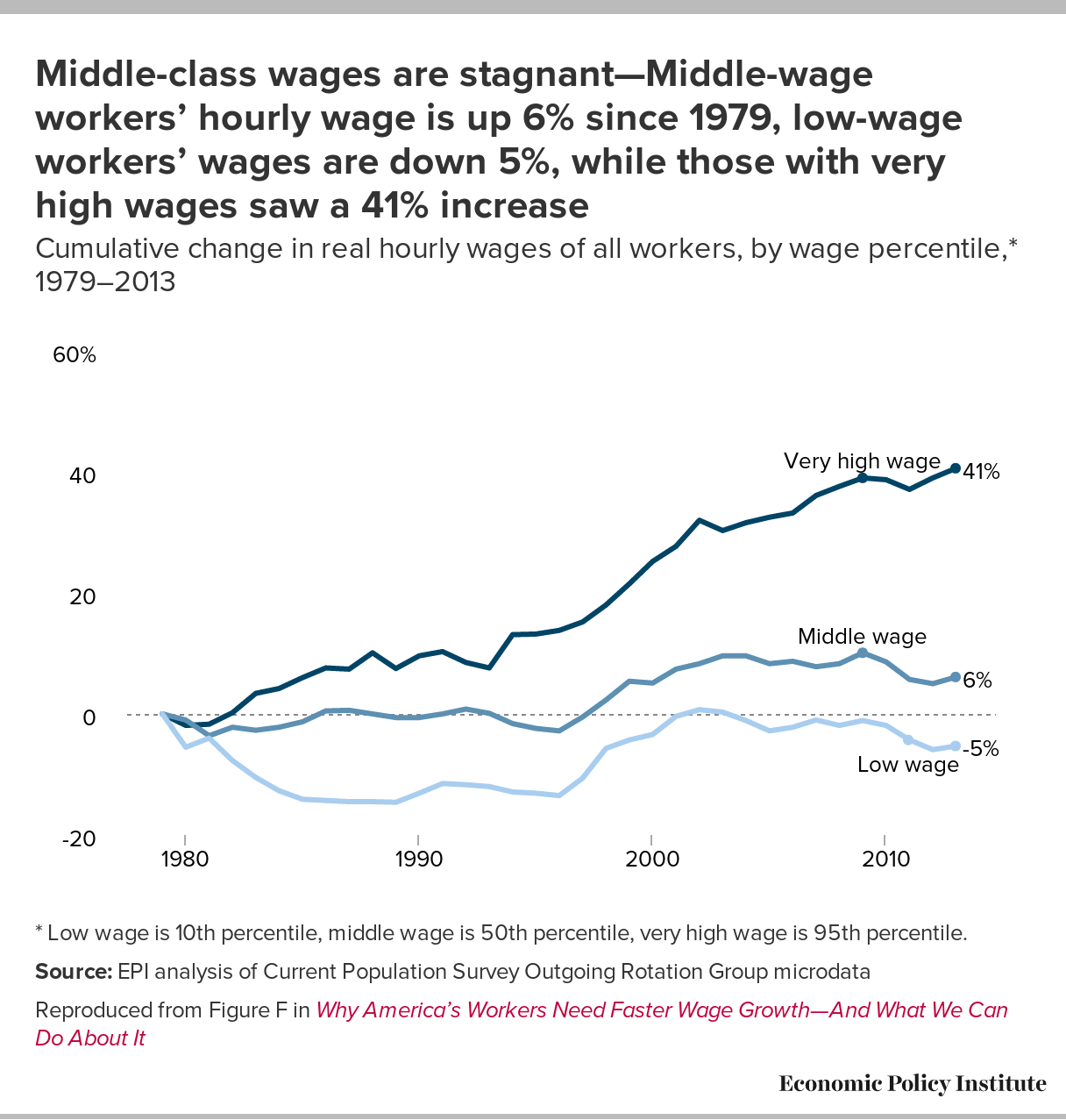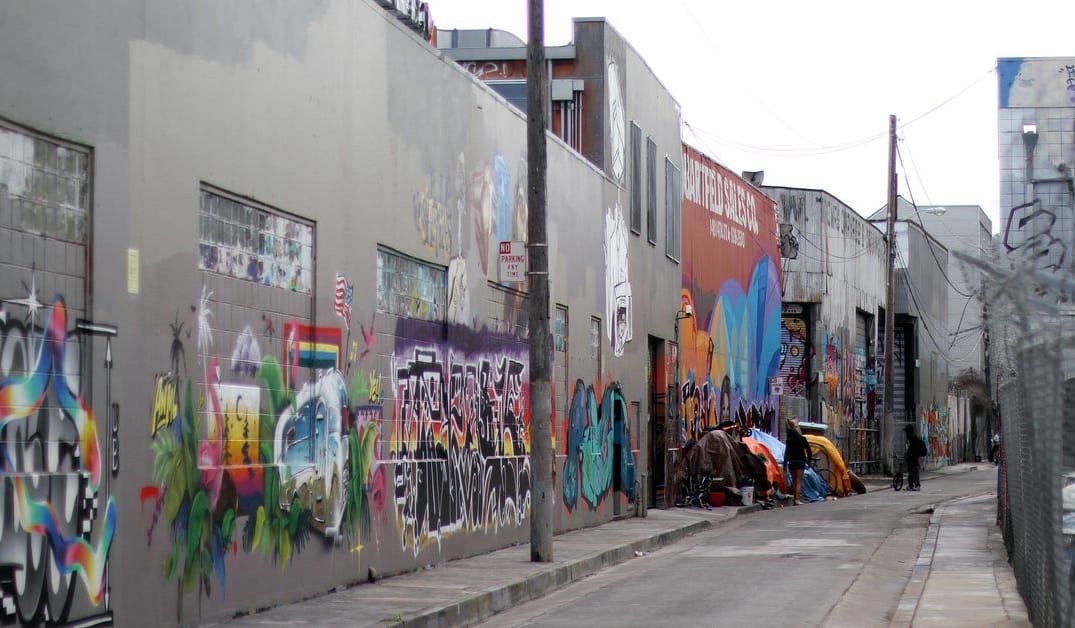
Silicon Valley likes to think of itself as a bastion of progressive social values. Indeed, tech CEOs regularly speak out in favor of equal rights for LGBTQ people and immigration reform to the point where the industry has been championed as a counterpoint to the nativist politics of Donald Trump and the far-right groups that support him.
Yet since Election Day, the industry’s interactions with the new administration have shone a light on how Silicon Valley’s economic interests undermine the progressive social policies it claims to support. Likewise, Silicon Valley is unleashing innovations on the world that, if not responsible for those very problems of inequality and polarization, are at least significant contributing factors. Tech companies are producing the tools to automate millions of middle-class jobs. Where jobs cannot yet be automated, innovations are enabling work to be made more casual and precarious through gig-ification. The impact is profoundly negative and a cause of the resentment that allowed Trump to win against his establishment opponent.
Job Losses Due to Automation
One of the central messages of Trump’s campaign was bringing manufacturing jobs back from overseas — jobs that had been lost because, he claimed, the United States was no longer competitive. In reality, manufacturing job losses had little to do with outsourcing and everything to do with Silicon Valley’s automation technology. Roughly 5.6 million manufacturing jobs were lost between 2000 and 2010, and automation was responsible for 85 percent of the losses.
Median incomes in San Francisco have declined by up to 10 percent since 1999, according to Pew Research. Basically, those at the top are seeing significant income gains — half of all income gains went to the city’s top 1 percent — but those at the bottom do not benefit.
For every $1 million of manufacturing output in the 1980s, 25 workers were employed. Today, only five workers are necessary per $1 million of manufacturing output. Despite these job losses, manufacturing in the United States is not in decline. Output continues to grow, but the industry needs fewer workers because technology enables production at a lower cost. Spot-welding robots in the auto industry cost just $8 per hour, compared to $25 for a human worker. Consequently, workers are often pushed into service jobs with less than half the hourly wage, fewer benefits and less stability.

These so-called “innovations” are also decimating the middle class. In 2015, CNN reported that fewer than half of Americans were considered middle class, down from 61 percent in 1971. In San Francisco, the middle class makes up only 48 percent of the population, while 28 percent are in the upper-income threshold — higher than the national average. But median incomes in the city have declined by up to 10 percent since 1999, according to Pew Research. Basically, those at the top are seeing significant income gains — half of all income gains went to the city’s top 1 percent — but those at the bottom do not benefit.
Automation has already played a significant role in transforming the retail and service industries. A growing number of fast-food restaurants are installing self-ordering kiosks to eliminate the need for cashiers. Netflix put Blockbuster out of business; Barnes & Noble is struggling to compete with Amazon; and Best Buy has had to transform its business model. These examples are but a few among thousands. The tech press gets excited every time Amazon tests a retail concept — most recently claiming the company would open 2,000 grocery stores (and forcing the company to issue a statement negating this) — yet it’s unlikely Amazon will ever make a significant investment in retail that makes up for the number of retail jobs its business model has destroyed. Wal-Mart was blamed for forcing mom-and-pop shops out of business, and Amazon may have a similar impact on big-box stores.
Precarious Work and the Gig Economy
The gig economy is a bane cloaked as a blessing — and a reality many middle-class workers will have to embrace thanks to the tech industry.Six million people are now in part-time workbecause they can’t find full-time jobs. While this is down from its 2010 peak, the figure is otherwise at a 30-year high.These workers tend to have lower wages, fewer benefits and less job stability — a bad deal for workers yet one that employers prefer. New scheduling software, such as that used by Starbucks, makes it easier to predict busy retail times, and employers schedule workers only for those peak hours, compensating them for just those hours (rather than a full workday).

Moreover, it’s no secret that workers in the service industry tend to be chronically underpaid. Middle-class wages rose by only 6 percent between 1979 and 2013, while the salaries of high-income earners soared by 41 percent. In contrast, the wages of those at the bottom fell by 5 percent, and as more people are being pushed from the middle class to low-wage service jobs, this inequality will be perpetuated. San Francisco tried to address this issue by passing higher minimum wages, but the rise of the gig economy could undercut this measure. While statistics about polarization, inequality and wage stagnation indicate growing problems, they do not illustrate the suffering that has been inflicted on those who are struggling to get by or are excluded from this new world of work.
Trump voters are looking for scapegoats — right now their focus is on immigration, but how long until they realize that technology is the real culprit?
Fueling the Backlash
Studies have found that those who are unemployed or underemployed are more likely to experience both mental and physical health problems, higher mortality rates and have challenging relationships with family members. And even though low-wage workers are more than twice as likely to be unemployed than high-wage workers, they’re half as likely to receive unemployment benefits. In other words, the unemployed won’t even receive the assistance they need to survive as they try to rejoin the workforce.
Many Democratic counties hit hard by the opioid epidemic had increased voter turnout rates and had flipped to Trump. She noted that “[s]ometimes people answer the door for the only person knocking,” and Trump, for all his faults, was the candidate who acknowledged their pain.
In 2015, more than52,000 people died from drug overdoses— almost 150 people every single day — but where were the media and the political leaders? In a salient piece written in May 2016,Anne Amnesia makes the connection between the opioid epidemic and the AIDS crisis, noting that US AIDS deaths hit their peak of 41,699 in 1995, while the rate of drug overdoses has far already exceeded that number and continues to grow. Whereas the gay community was organized to fight for recognition, there wasn’t solidarity among what she terms the “unnecessariat” — people without the resources to fight for fair coverage. Writing about the unnecessariat, Amnesia warns readers that the “world of self-driving cars and global outsourcing doesn’t want or need them. Someday it won’t want you either.”
While coastal leadership seemed to be ignoring the opioid crisis, areas with declining white mortality rates were more likely to vote for Trump in the primaries, according to Amnesia. Further reporting found that counties with higher rates of drug overdose and suicide were more likely to vote for Trump. Historian Kathleen Frydl found that many Democratic counties hit hard by the opioid epidemic had increased voter turnout rates and had flipped to Trump. She noted that “[s]ometimes people answer the door for the only person knocking,” and Trump, for all his faults, was the candidate who acknowledged their pain.
If Silicon Valley wants to “disrupt” the world, it needs to start paying attention to the human impact.
Silicon Valley Must Act
The first month of Trump’s presidency has made it clear that he has no intention of doing anything for the desperate people who have voted for him. But the Democratic Party also isn’t providing a solution to this crisis, and Silicon Valley hasn’t escaped unscathed. Trump voters are looking for scapegoats — right now their focus is on immigration, but how long until they realize that technology is the real culprit? If Silicon Valley wants to “disrupt” the world, it needs to start paying attention to the human impact.
And why should Silicon Valley care? A report by the California Budget & Policy Center explains that high levels of inequality reduce economic mobility, which tech leaders should value due to their belief in meritocracy. Even more persuasively: the gains of high-income households could come at the expense of those at the bottom. As the rich get richer, the poor get poorer. This isn’t new nor revolutionary, but it’s something the business leaders of Silicon Valley should actually care about. It’s time for Silicon Valley to stop ignoring the human toll of their innovations and to start working toward solutions.







